

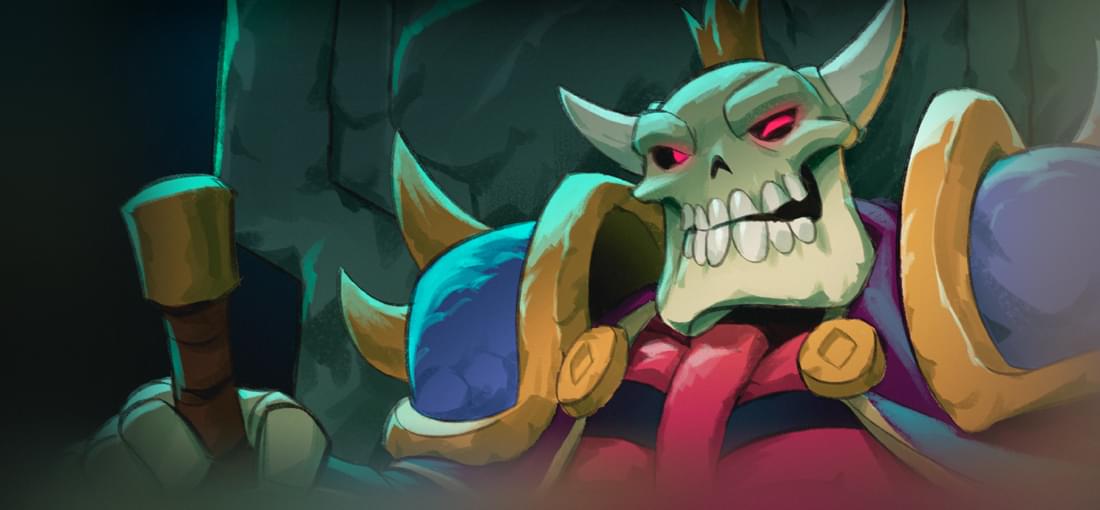
I expected Dungeons of Dreadrock to be a nice little puzzle game that I’ll be able to finish quickly, but after reading some reviews I had some concerns about the action elements, the required timing and reflexes, since even the hint system wasn’t going to help with that, and I also wondered whether I could “manage” to mess up the connected puzzles in a manner that’d lead to getting locked out of continuing. So it was a relief when my concerns proved unfounded and I finished the game without ever using the hint system, the video driver’s software claiming that it only took me six hours, though they were split over six days and the number surprised me when I saw it, since it definitely felt like it took longer. If that sounded bad, let me assure you that I merely meant that I really didn’t think that my playing sessions were so short and that, seeing as there are 100 levels, each of them took me only a few minutes, on average. And that would remain the case even if that timer’s off by as much as a few hours. But what’s more important is that I wanted more when I was done, and not just because I generally want to spend a significant amount of time with a game I choose to play and count requiring anything less than quite a few tens of hours to finish as a negative, but because I actually found it enjoyable and satisfying. Plus that the story, such as it is, couldn’t just end there. And, indeed, it doesn’t, the series apparently being planned as a trilogy and the sequel having already been released… Though it’s unfortunately not here yet. But that’s another issue, so let me get back to this game and say that the bite-sized puzzles are generally just right, with only a few threatening to be potentially frustrating by requiring more than a matter of seconds to reach a trickier final part, while in the large majority of cases you don’t really “feel” it even if you have to retry several times. And you also don’t really feel the increase in complexity or difficulty, the features being introduced gradually, most of them being intuitive, and adequate explanations usually being provided in the remaining cases. So there shouldn’t be more than a few moments when you’ll find yourself at a loss, and the hint function is available if you do find yourself in such a situation. But, as I already mentioned, I never used it at all, not even to test it, so I can’t say how helpful it actually is. What I can say, however, is that some features are pretty clever, those that involve connected levels probably being the most notable. And, perhaps more importantly, almost all of the solutions make sense and there are moments when the game will make you feel pretty clever for figuring things out on your own. Admittedly, there may also be moments when you’ll feel pretty foolish for failing to do so sooner, and a few solutions that may be rather strange. Since they could be seen as spoilers, I won’t give any examples, not even naming the one puzzle that I ended up solving by accident, just trying everything and then going to check a guide after it finally worked to find out just what I had actually done, but I will add that, at least in my case, the former far outweighed the latter. And I’ll also add here that those dream sequences do their job well enough, both in terms of the story, such as it is, and providing hints. As for those initial concerns, the fact that I never had good reaction times or coordination and they’re definitely not getting any better as I get older did mean that the action and timing elements were an issue, and there were a couple of moments when I thought that there must be another solution because it didn’t seem possible to actually do what seemed necessary, but I eventually managed to scrape by. So you can make it if your reactions and finger movements are a “normal” kind of poor, but if they’re at a level that may or does indicate health problems, not to mention a disability, the only solution is probably activating the cheat mode and skipping levels. And that mode would also cover the worst case scenario of becoming unable to continue by messing something up in a level that’s connected to another in a manner that couldn’t be fixed normally. But I for one didn’t happen to find myself in any such situation and those levels are typically designed to assume that you’ll initially go for the easy or obvious solution of the first one, end up making the next one impossible as a result, and then go back and fix things. Sometimes that’s possible right away, in a few cases it requires restarting that first level of the pair after returning to it, but you can always restart a level at will and it seems to always be possible to find the solution normally, without even resorting to using the load function that allows you to go back to any previously completed level. And yes, you’ll clearly know when you may need to go back up because those are the only times when you can do so, a message stopping you otherwise. Still, I’d have felt much more at ease if manual saving would have been allowed, and I’ll always see it as a major negative aspect of a game, any game, when it’s not. Yes, Dungeons of Dreadrock lets you reload previously completed levels if you wish, the cheat mode means that even if the save is lost or corrupted you can get back to where you were, and the short levels mean that you lose very little in case of a crash, power failure or immediate need to quit, but not allowing manual saving, in different slots, still shows a lack of respect for the player’s time and doesn’t allow multiple people to play the game on the same account, and needing to use the cheat mode because the one automatic save somehow got lost, corrupted or overwritten may be disappointing. And there’s also the option to clear that save, and while it requires confirmation, it’s not impossible that someone would accidentally activate it. On the other hand, I can find few other faults. I mean, yes, the game is too short, it doesn’t have much of a story, and the action and timing elements can prove difficult to manage even if you correctly figure out the solutions to the puzzles, but all of that is pretty much expected and should be known by those who look up a little information about the game before getting it, and the price is right for what it offers, especially considering the typical discount. There is the fact that you can’t customize the controls, but there are very few of them. And I wonder if being unable to skip those logo videos is some sort of Unity thing. And another potential tiny nіggle that has to do with starting the game is that it attempts to connect to, or through, the Galaxy client even if it’s not installed, leading to a pretty significant delay unless you add “, “auth_timeout”: 1” in the GalaxyConfig.json file from the game’s folder. In short, if you know what you’re signing up for and can deal with the action and timing elements at least to some passable extent, it’s hard to go wrong with Dungeons of Dreadrock, especially when you can pick it up even for well under $1. It won’t be memorable, even less so in terms of the story, but it provides 100 bite-sized levels of generally enjoyable and at times clever puzzles that will make you keep thinking “just one more level” while you play and leave you wanting more at the end. Just keep in mind that there’s a single slot, used for automatic saving after each completed level…
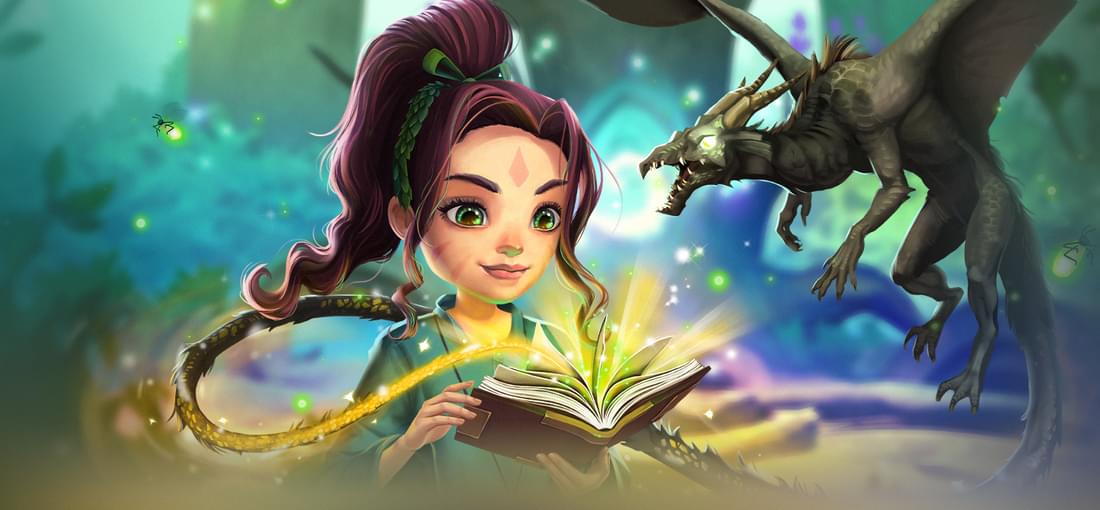
The first words that came to mind when I was trying to characterize Lost Words: Beyond the Page were nice and sweet. But I can’t really use those. In part because they’re too simple, too plain, but mainly because they’re inaccurate, potentially leading to wrong expectations about what will happen and how it’s likely to make you feel if you play it. So I’ll go with wholesome instead, which is far more appropriate. Plus that it does sound more like the sort of term that one should use while reviewing a game that’s ostensibly about writing, doesn’t it? Actually, it really is about writing. Not so much about the character’s, the Estoria sections being pretty much as childish as it’d be expected, even in the later parts, at least in my opinion, but about the game’s, the “real” story and the way it’s presented in the Diary sections, the narration also playing an important role. And, from this point of view, the fact that the character’s writing remains believably suitable for her age should be seen as quite an achievement. The far bigger one, however, is the emotional response it generates, the punch it packs even when you, the player, are likely to know what’s coming. The largely relaxing, risk-free gameplay, with light platforming and puzzle elements that you just get to try again right away if you fail and choices that allow you to shape certain moments without actually carrying real consequences, only complements and emphasizes the focus on the story and its emotional impact. It serves to keep players engaged and feeling that they’re actually taking part without needing to think or worry about playing the game in itself. So I won’t dwell any more on the gameplay either, Lost Words: Beyond the Page being a great example of using the medium to deliver a story, and in some ways a message, and being just enough of a “game” to perhaps appeal not only to some who might not have the patience or the attention span for simply reading, but even to some who’d reject the “walking simulators” that tend to be seen as the genre that’s typically used for this purpose. It does still require the willingness to take it easy, or better yet to see it as something that’s to be experienced rather than “played”, the fact that the logo videos can’t be skipped whenever you launch it perhaps being one more indication of that… And one that I could have done without. But that's just a tiny nіggle, a far more serious complaint being that there’s no manual saving. There are three slots, so the game can be played more than once or by multiple people at the same time, the checkpoints are particularly frequent and, as I already mentioned, if you fail something you just get to try again right away and there are no real choices that you should save before. But sometimes it may feel like there are, so you may want to, just for your peace of mind. Admittedly, the player’s peace of mind isn’t necessarily what the developers were aiming at, but it doesn’t mean I have to like the approach. Plus that, no matter how generous the checkpoint system is, manual saving is a matter of respecting the player’s time, of allowing quitting whenever you want or need to without the risk of losing anything. And then there are some bugs as well. Some are minor, like words that vanish after a certain point reappearing after reloading during that chapter, but there are even places where you can get stuck, in which case the checkpoint system shows its ugliest face, possibly even meaning that you’re forced to restart the game. While I obviously had no intention of testing it myself, I saw a post stating that such a moment may exist in the lava cave, after you get Burn. And I for one “managed” to get quite literally stuck at those falling rocks, ending up on the edge of one when the next one fell and being unable to move, so I had to quit, fortunately being able to continue from the last checkpoint after that. Moving on to the collectibles, I’m not sure about the asterisks, but there is at least one firefly, in the desert, that can become unreachable, though I realized it quickly, went back to the menu, then resumed and was able to get it at that point… Only to see at the end of the chapter that I had missed others as well, probably because, being the first chapter where they appear, I didn’t quite know what I had to look for and collect. And the game seemed to be rather confused about the number, since I remembered seeing 17/20 at the end of the chapter and, without missing any others after that point, I was still missing three from the total at the end, but the counter shown next to the save slot only listed a single missing firefly all the way, and when the Chapter Select option became available, after finishing the game, it listed 19/20 in that chapter. Then again, while I didn’t actually check, I got the impression that it doesn’t really matter in terms of the game itself, not counting achievements, for those who care about that sort of thing. But I said that the game is mainly about delivering a story and a message and then wrote three paragraphs complaining about technical matters, and minor ones at that, with the exception of the few that may result in being unable to continue. So let me now get to what bothered me about the message. Not the story, which I’m definitely leaving under positive aspects, but the message behind it, which has to do with the “proper” stages of grief and coming to terms with facts or events that are beyond one’s control and can’t be changed, in ways that the modern mental health field would support or at least accept. I will emphasize that the point isn’t driven home that much and the conclusion is bleaker and more negative than what most mental health professionals would typically advocate and definitely very far from what would come from this toxic cult of positivity that keeps being so terribly popular, so my reaction is also far less negative, but I was nevertheless bothered by this. And yes, I’m quite aware that this basically amounts to complaining that the developers have achieved what they set out to do, which hardly sounds fair when you put it like that, but it is what bothered me the most and I must say it. And, while it’s less important because it was just mentioned in passing, there was one more moment that I reacted negatively to, and this time there are no caveats. I’m referring to the character writing “when I get my first job” despite correctly stating “if”, and even “unlikely”, when it came to getting married. So she didn’t have what are considered to be the typical stages of life drilled into her mind to the point that she sees them as mandatory and unavoidable, or at least managed to resist that process in case of some of them, but that apparently doesn’t apply to the hamster wheel of wage slavery. And I’d have quite a few comments to make about “when I go to university” as well. Leaving a few technical matters aside, Lost Words: Beyond the Page’s light, largely relaxing and risk-free puzzle platforming gameplay strikes the balance between being sufficiently engaging to keep one’s attention and not taking any of the focus away from the compelling and believable narrative that is the game’s primary purpose, and which is likely to generate quite an emotional response even when, unlike the character, you can see what’s coming. The exact nature of that response and the “taste” it’ll leave you with will be in part influenced by your attitude towards what are considered the “proper” stages of grief, and perhaps also of life, but even I will say that it could have been much worse… And I actually expected it to be, so while I can’t say that I enjoyed it, I wasn’t exactly displeased either, and I’ll readily admit that the developers have definitely achieved what they set out to do.
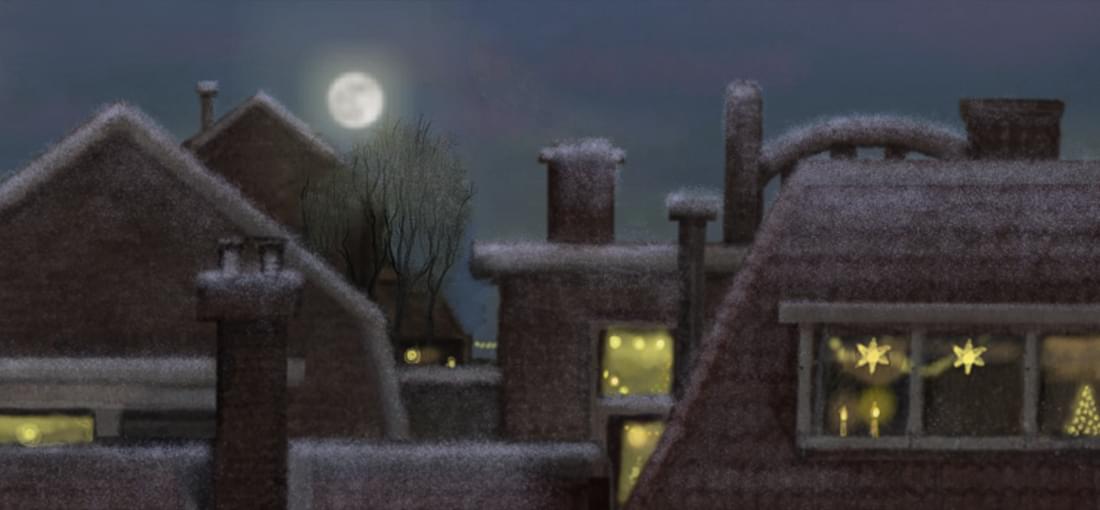
This is a short game about a cat and a bunny that’s meant to advertise Milo and the Magpies, but in my case just confirmed that it’s nothing I’d ever care to touch. And while Milo, the cat, can be said to be the main character, it’s not the player character, the player interacting directly with certain areas of the screen. And there are few screens, chapter one taking place on two, but chapters two, three and four on the same third one and chapter five on a fourth. So, if you can figure out what you have to do right away, you can finish the game in minutes, even if some animations can be rather slow and the interactions between the cat and the bunny are tedious and serve no real purpose, not even being cute, at least from my point of view, yet the game requires them in order to progress, and in fact chapter four consists solely of this, and includes a part where any attempt at realism is thrown completely out the window. However, it's chapters two and three that are frustrating, the puzzles taking me a while to figure out, and in case of the one from chapter three I can't even say that I did figure it out. I mean, I did feel pretty clever when I figured out the correct placement, but then I had no idea how to use it to figure out the numbers and apparently just stumbled upon the solution while I was actually trying to go for a different number. And while chapter five was easier to figure out, it struck me as strange that the sign wasn't translated to English when clicking, which has to be a bug. But at least I was able to finish the game in one sitting, albeit only finding one of the secrets. Still, while there's no way to manually save, if you quit you resume from the start of the chapter you were in at that point.
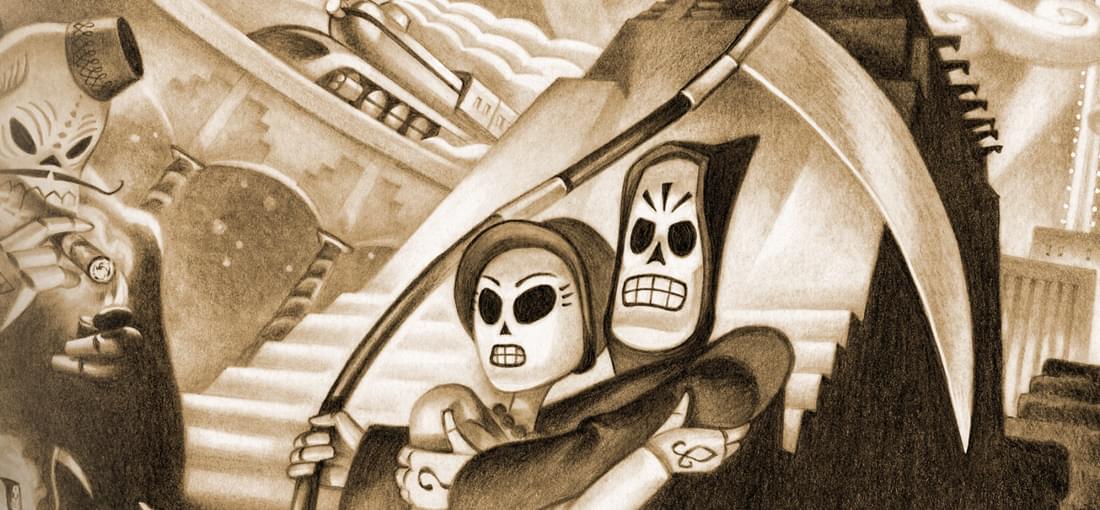
I must say that this review is put together in a hurry and focusing mainly on the remaster and less on the game itself. I haven't played the original game, however, and also didn't care to try to play this version with the original controls or graphics, so I can't make a direct comparison, but some improvements, mainly when it comes to the controls, are so obvious and important that I don't even want to think about needing to play the game without them. Starting from there, the fact that point and click controls were introduced in this version made the game playable as far as I'm concerned. I don't know how somebody initially thought it was a good idea to make the player need to slowly move Manny all around, try to figure out what he was looking at and hope to avoid missing anything, but at least they came to their senses for this version. Or they partially came to their senses, but more about that later. The other immediately noticeable improvement has to do with the graphics. For those who want to compare, switching between the original look and the enhanced one can be done at any point, with the press of a button, but graphics aren't such an important aspect for me and, as one of the bits of commentary also mentions, the game's art style actually suits those early 3D graphics in a way that very little else does. And the sound is another aspect that was handled well to begin with, the music being perhaps best described simply as being truly fitting, and the voice acting actually being great; no complaints from me about either. In addition, and in fact more importantly, the dialogues, characters and overall story are quite good. Wouldn't say great, this is no Planescape: Torment or Vampire: The Masquerade - Bloodlines, for example, but Grim Fandango may well be one of the better games from these points of view as well, all of these aspects put together also meaning that it may well be one of the better ones when judged on its artistic merits in general. Unfortunately, I can't maintain this good opinion when it comes to the gameplay, even in this edition. I already said that, from my point of view, the original game was nearly unplayable, but they could have improved it further in this version by adding a proper inventory, and maybe also a way to highlight what you can interact with, though the point and click controls admittedly make this only an optional helpful feature. A journal would have definitely been useful, however, the dialogue transcript being a poor substitute, its role being at most to add a slow and tedious way to partially compensate for the fact that you can't repeat dialogues in case you forgot something, or missed it in the first place. On that topic of knowing what to do, there may be fewer examples of Moon logic than adventure games tended to be infamous for, possibly also in part just because there is no proper inventory system, and there are some parts of the game where there isn't that much you can do, so a bit of trial and error should be enough even if the puzzle makes little sense or you forgot what you should be doing and obviously don't have a journal to use to remember. At other times, however, the solution makes no sense and simply trying everything may not be a realistic option, year two probably being the most confusing overall, considering the number of locations, characters and items you may end up carrying at once, and the fact that it seems some context is missing early on, and possibly later as well, if you don't quite do or find some things in the intended order. Still, while I did need to read the full solution for one year two puzzle as well, when Manny needs to get strip searched, the one that struck me as the worst, simply impossible to either figure out or stumble upon the correct solution on your own, was in year one, to find the key for the way to Rubacava, the fact that the commentary recognizes it as a problem being little comfort. Since I got to the commentary, it was quite messy, difficult to follow at times. They should have taken some care to speak better, and maybe more to the player than to each other, and at times even over each other or more or less to themselves. The fact that the text is often a bit faster than the speech only makes it worse, and you can't hurry it along either, just reading the text faster and skipping to the next line when you're done, that function not working on the commentary. In addition, there are quite a number of commentaries with tiny trigger areas, easy to miss if you don't make sure to step in pretty much every possible spot, and at least one place, when you get to the Florist in year four, where just playing the game normally is likely to lead to completely missing some commentary, as well as some of Manny's comments about what he sees, since you can't get back there. Otherwise, I personally liked that the commentary at times provided hints, but can see how many would dislike that as well, so there should have perhaps been a way to enable and disable such spoilers. It struck me as odd when I spotted some wrong names in the transcript of a few of the first year two commentaries, and then there was the time when the commentary icon briefly appeared at the end of the car ride to the final area, when I doubt that pressing the commentary key would have worked during a cutscene even if I'd have managed to react in time. But those are tiny issues and I just mentioned them to connect the part about the commentary to this one about bugs, the important ones having to do with running to some things you can interact with or even to some area exits, which can sometimes require reloading or even forcing the game to close, and perhaps even more notably with manipulating the crane's chain in year three, the game hanging multiple times until it finally allowed me to get past that puzzle and freezing the display as it did so, so it's a good thing I knew how to "blindly" force it to close. As for other smaller problems, there are a number of objects that don't have point and click controls, though they all seem to be objects Manny will only comment on, not any that can actually be interacted with, and also a few cases where such controls seem to have been added where they shouldn't have been, clicking one such object causing Manny to move to another, though this again doesn't interfere with any puzzles. Overall, when it comes to the artistic aspects, the story, characters, dialogues, acting, music and art style, Grim Fandango was a good game to begin with, and this version retains those aspects and also adds graphical improvements, which can be toggled on and off at any time with the press of a button. However, I don't even want to think about having to play the game with the original controls, so I'll once again stress that, from my point of view, the point and click controls added in this version simply make it playable. There are other improvements which should have been made and weren't, and a handful of bugs that weren't fixed or were even added in this version, but changing the controls means it can be played as it is, and those positive aspects can be enjoyed. That's not to say that it can't still be frustrating at times because of puzzles that make too little sense or, in a few cases, are pretty much impossible without a guide, but probably less so than most adventure games.
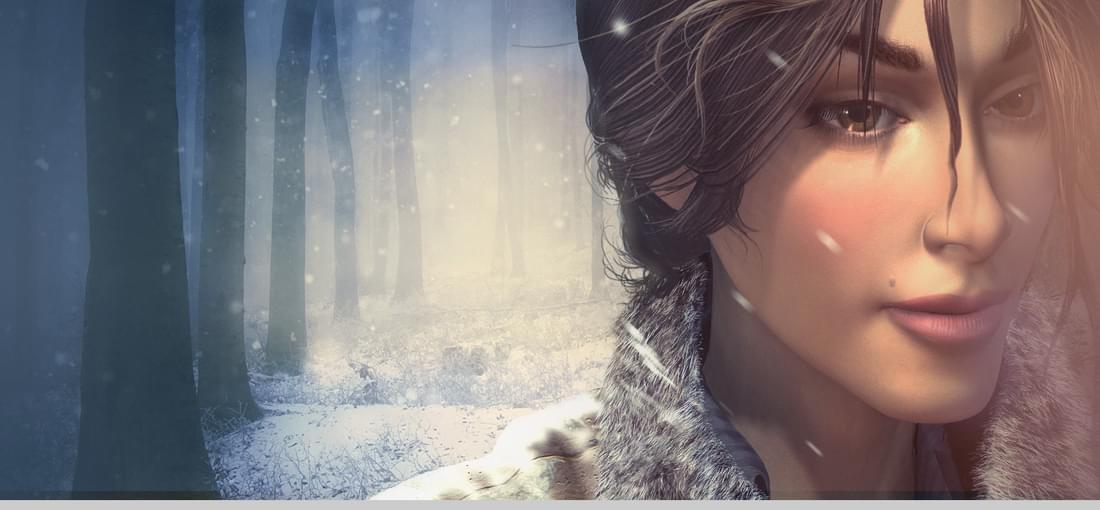
The Syberia recap is a nice thing to have, but I’d say it was the better game, with a better setting and atmosphere. Alexei’s book is a pretty nice touch though. In general, the graphics, being in the same style, still hold up well, characters seem to look and move better, though I’d say Kate would need much warmer clothes in that climate, and the music remains nice enough. The writing can be an issue, however, dialogues often not quite fitting together and simply not having enough quality overall. And the fact that you can’t repeat any piece of conversation and they’re not logged either can be quite a problem at times. It can also be annoying when some conversations end after a certain option is selected, before exhausting all, and that often you do exhaust all available topics, but if you immediately talk to the character again, new options appear. But an adventure game’s gameplay is defined by puzzles, and those again usually made sense, and I’d still consider the lack of inventory ones a plus. It can be tricky to spot some objects or even exits, and the areas that pan can still be confusing at first, but I didn’t even really get frustrated by the few puzzles requiring trial and error, taking them for what they were and solving them quickly. I consider it either a bug or the game‘s one instance of Moon logic that the dream clock puzzle can’t be solved correctly, accurately, but there was just one other place where I checked the walkthrough, the drums in the Youkol Cave, and that was my fault, the area seeming rather confusing and making me think I missed something elsewhere when I just couldn’t find the target for the otherwise obvious solution. They get rather too straightforward after leaving the Cave, however, as if the developers got bored, locations and cutscenes otherwise seeming to indicate that they weren’t really rushing. Was left at a loss regarding Kate’s fate though, and also wondering what the point of everything about her work and being tracked was.
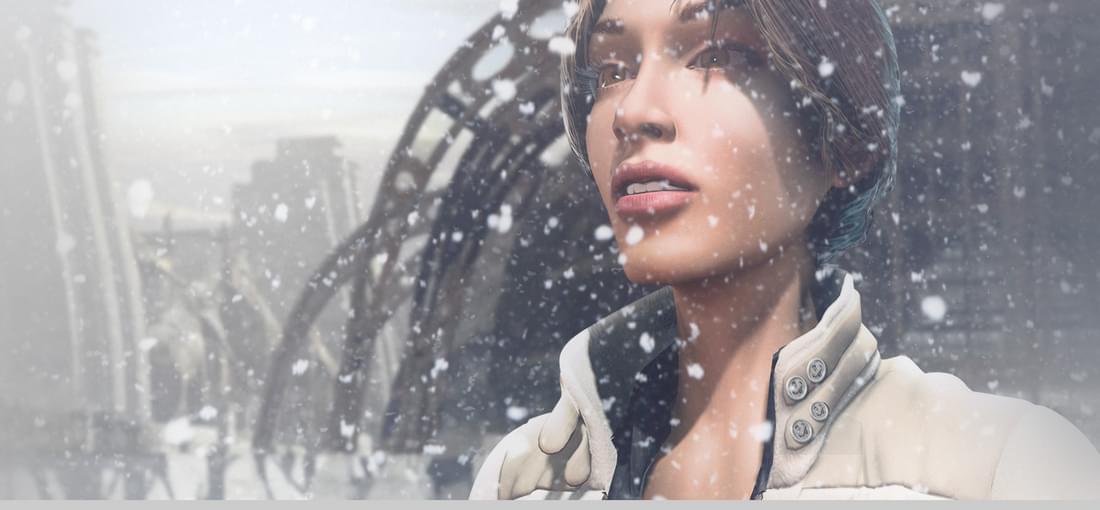
I gave up on adventure games pretty much completely more than 15 years ago, but found myself sort of curious to try this one ever since it was given away for free and did in 2019. And I was stubborn enough to never glance at a guide, figuring everything out on my own, the fact that I was able to do so quite clearly meaning that there wasn’t much Moon logic involved. There were also no inventory puzzles, and in fact there were few items in inventory at any one time, being able to pick up an item usually meaning that it’ll be used soon, and the pointer indicating invalid actions doing away with the need to actually try everything. For that matter, most of the time there was just one actual available action, the trick being to find it. That did lead to a few moments of searching the entire current area from one end to the other for something I missed, but those were fewer than expected, and once or twice the solution had been staring me in the face all along, and actually more interesting than I thought. Other than that, the story was interesting enough, and while Oscar was rather too much to ask in terms of suspension of disbelief, the rest of it did quite well in walking that line between being too mundane for such a game and too ludicrous for one nevertheless placed in this “reality”. Also, quite liked the locations, the backgrounds, the whole setting and atmosphere. Liked them enough that I wasn’t bothered by the screens that had no relevance from a gameplay perspective, though I would have been if I wouldn’t have quickly discovered that double clicking made Kate run. The 3D characters didn’t fit so well, and they moved particularly oddly, but I guess that has to do with the technological limitations of the time. Stairs were always annoying though.
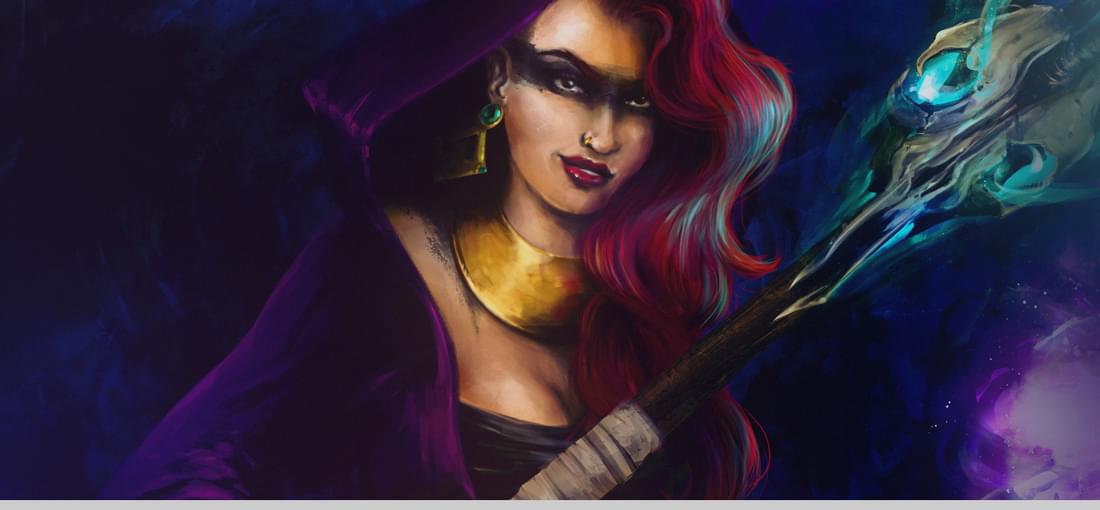
While not something to write home about, as they say, Eschalon I is a pretty nice game that was, for the most part, quite enjoyable. Despite its limitations, the most obvious being that speed can only be doubled or halved, I’m somewhat fond of this type of turn-based gameplay, there was enough to explore and do, and despite the relatively simple graphics and, for lack of a better term, structure, it was more immersive than it might seem at first glance, at least while exploring the wilderness. The music likely helps with that too. Unfortunately, character attributes are rolled, which is awfully frustrating, and then I have to point out the annoying skill system, requiring the player to read a guide first, in order to know which skills have trainers and/or books available before putting any points into them, and which may be increased by equipment before putting too many, so the limited skill points won’t be wasted. Other issues directly affecting the gameplay would be the fact that maximum regeneration is limited to one point per turn, which doesn’t seem right, and I’d say also the way movement is handled. As for lesser annoyances, I’d list the fact that selecting spells to cast can get rather tedious once you have many and the limited container space, with only eight items per container, requiring storing items in multiple places, though at least you can do so close to places you can quick travel to. I could also mention that locks and traps are a matter of reloading until you get the right roll, but that’s all right.
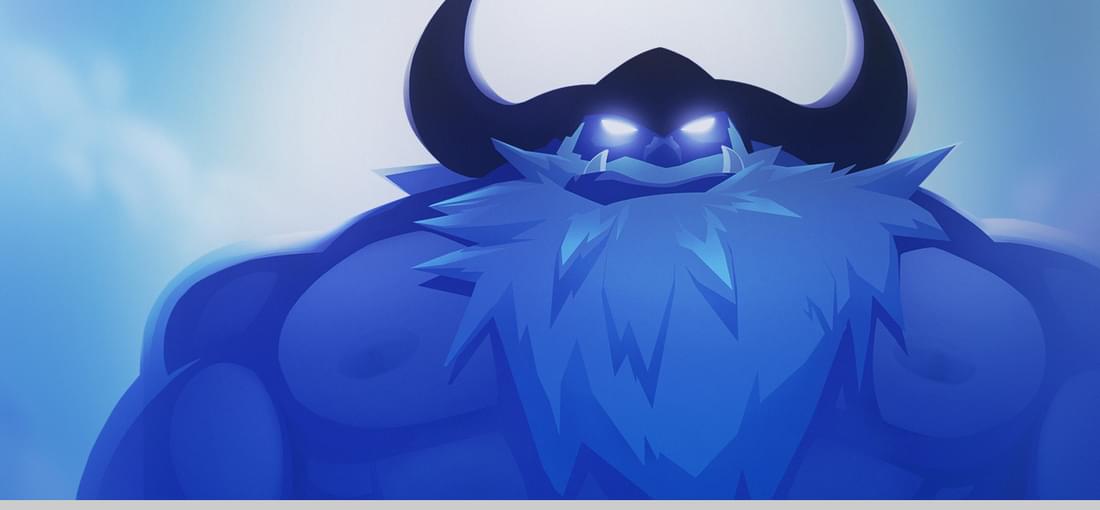
Started Jotun in the first hours of 2019, thinking it’ll be a game I should be able to finish quickly enough, to get a good start of the year from this point of view, and that proved to be the case. That second Jotun, which is in fact the only one that attacks simply because you’re there, the other battles starting after you strike first, made me think I had been wrong, killing me dozens of times and making it seem as if I couldn’t get past a certain point in the battle, but once I got past that it went quite smoothly. The handful of attempted “Valhalla Mode” battles against the two Jotun which had seemed easy only resulted in the same number of deaths without it even seeming that I had a chance against those more powerful versions and I didn’t care to struggle any more with that, so I’m just referring to the game itself, up to that point, which is actually pretty short, despite some issues that may make it artificially longer and also cause the player to reconsider a session if they’re not certain they’ll have the time to at least finish an entire area. What does work well in Jotun is the art, and I’m not just referring to the style of the graphics. That is indeed excellent, and also does a good job of creating the sensation of scale and of how small Thora is compared to the challenges she’s facing, but the music isn’t bad either and the developers seem to have made pretty good use of the mythology, at least for the limitations of the game. The way the creation myth was used in the Ymir’s Blood area struck me as particularly notable, though I guess others may disagree, since this is very obvious while in other areas the mythology was perhaps more organically intertwined. How Thora presents a part of her story after each section also works out all right, despite probably not being something notable in itself. I’d say that the spoken language proved to be somewhat more notable, on the other hand. It had at first struck me as a gimmick which was likely to prove annoying, but once I actually played for a while and heard it a few times, I realized it really fit and enhanced the setting and the desired atmosphere. So what I can say about Jotun is that it can be seen as a pretty good work of art, at least considering its limitations. Judged more by its artistic value and less by its gameplay, it would do quite well. It may be a fair example of games as art, but I don’t think playing it is required to properly appreciate its artistic value. There are games that make particularly good use of the medium in this manner and which need to be played in order to be understood, felt, appreciated at their real value, but in case of Jotun, watching it may be enough… Which I guess isn’t a good thing in itself, but may be if you don’t have the skills to finish it or just don’t care to. However, it is a game and I did play it, and the first thing that bothered me was the camera. I’d even go as far as to call it awful, at least if you’re trying to actually play the game and not just watch it. Probably another element that works quite well if judged on its artistic value, but there’s no way to control it and the changes in zoom level and the way in which it follows Thora or the action can and will cause quite a number of issues. Sometimes it’s simply a matter of being too slow to reveal the larger area or follow when you move away from it, likely in an attempt to create a more powerful impact and pressure the player to stick around long enough for it to sink in, but other times it may actually cause some confusion or add to the difficulty of battles. And on that note, the fact that only Thora’s shadow is visible when she’s under or behind something else definitely doesn’t help either, though I must admit that, without being able to change the camera’s angle or rotation and without negatively affecting that sensation of scale, I don’t know what other solution the developers could have found. Since I mentioned battles, one important reason why they are difficult is Thora’s particularly slow attack, which keeps leaving her exposed since it can’t even be stopped except by dodging. Yes, enemies tend to also be slow, usually even slower, but clicking and then needing to wait for two seconds before the strike comes doesn’t allow for any sort of flow, nor does it give you a feel of the battle, not even creating a sensation of weight. Yes, there is a quick attack, if you attack while dodging, making Thora end the roll offensively, but that attack is much weaker and also requires dodging straight towards the enemy, and there’s the time needed to roll to be taken into account as well, plus of course needing to be very much aware of the position at the end of the roll. On top of that, you can’t save manually, the situation being automatically saved once you complete each area, so the areas that need to be explored, for the required runes, as well as the God Powers and additional health, need to be completed in one sitting, and if you die at one point, you’ll need to start over. You do keep what you gain, but still need to go through the whole thing all over again, until you can get to the end in one sitting and without dying. In addition, if you quit you’ll start back in Ginnungagap, needing to walk back to the area, and through that first part, before the actual “arena”, of those with the boss battles. There’s also the fact that, until you learn to make proper use of the fountains, restoring your health and powers only at the end, or when you find yourself unable to do so, it may be better to die early in a section’s second area, as in that case you’ll start it again fully restored, while otherwise you’ll only have what you had left when you completed the first area. The area map isn’t exactly easy to use either, since it doesn’t indicate your position and is rough, possibly even including a few mistakes, so you’re expected to keep track of your position and figure out what those rough sketches actually represent. It’s a smaller problem than the rest, but it can nevertheless be frustrating… As was the fact that I couldn’t see the right part of the last constellation in the Northern Sky area, only sorting the matter out after starting over, since trying to complete it blindly eventually resulted in death, taking a screenshot of the image on the rock and using it to fill in the rest once I got back there. Perhaps it had to do with my resolution, 1280×1024, this possibly having something to do with some of the ways in which the camera annoyed me as well, but if a game supports a certain resolution, it should actually be playable in it. And since there’s nowhere else to put this, and it’s not like the scroll wheel is used for zooming or anything, I’d have liked to be able to use it to switch God Powers, but it’s not possible. Overall, Jotun really is better if seen as a work of art than as a game, with an excellent graphic style, fitting atmosphere and a fair amount of attention paid to the mythology it’s based on. Judged on its merits as a game, on the other hand, it’s quite frustrating, in good part due to various design decisions, and while the camera may perhaps be partially justified by the desire to enhance the artistic value, it’s harder to find justifications for the lack of manual saving, the rough map that doesn’t even track your position, or Thora’s slow attack that doesn’t even create a feeling of weight… Except perhaps that the developers wanted to extend the game’s length to some extent, since it’s quite short otherwise, but this is most definitely not a good way to do so. As a result, I can recommend watching the game, if the one recording explored everything and did so properly, but actually playing it, perhaps not so much. Still, couldn’t possibly call it a bad game, so if you can deal with some frustration and a few tougher fights, you can play it too, even if just to list another game as finished in a relatively short amount of time.